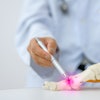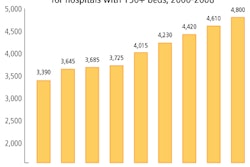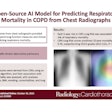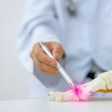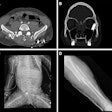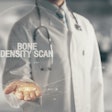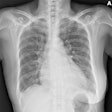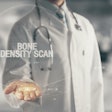Computer-aided detection (CAD) was highly sensitive in picking up cancers that computed radiography (CR)-based mammography had missed, according to a multicenter study presented at the Computer Assisted Radiology and Surgery (CARS) meeting.
Dr. Rachel Brem and colleagues from George Washington University Medical Center in Washington, DC, aimed to evaluate the performance of a commercially available CAD system in a modality that has received scant attention in previous research.
"To date, there's been a paucity of data evaluating CAD with computed radiography mammography," said Brem, who is a professor of radiology and vice chair of research and faculty development at George Washington. She also serves on the board of directors of CAD developer iCAD of Nashua, NH.
A recent study compared CR mammography and analog mammography using a total of 213 cases with 53 cancers and 36 normals. "So the question we wanted to ask was, how often does CAD detect cancers that were missed by [Mammography Quality Standards Act (MQSA)]-certified radiologists when evaluating CR mammograms?" Brem said.
Using these cases, Brem and her team aimed to test the performance of a computer-aided detection system (iCAD) in detecting breast cancers missed in a study based on the number of readers who missed the cancer.
All exams were performed with CR mammography units (Fujifilm Medical Systems USA, Stamford, CT) and consisted of screening (54%) and diagnostic (46%) cases. All lesions had been detected mammographically and interpreted as BI-RADS 4 or 5, and all were biopsy-proven malignancies. In all cases both the cardiocaudal (CC) and mediolateral oblique (MLO) views were included, and there were 36 normal cases that were interpreted as BI-RADS 1 with both the CC and MLO views, Brem reported.
Two cases were eliminated from the analysis because the radiologist was unsure of the cancer diagnosis, leaving 51 cancers.
Six readers provided a final BI-RADS assessment for each case. There were nine (17%) BI-RADS breast density 1 cases, 24 (45%) density 2 cases, 17 (32%) density 3 cases, and three (6%) density 4 cases. A single radiologist determined whether CAD correctly marked each lesion.
Of the 51 cancers, 38 (75%) were primarily mass cases, while 13 (25%) were primarily microcalcification cases, Brem said. The average lesion size was 1.9 cm, with a median of 1.7 cm and a range of 5.0-7.1 cm. Seventeen percent of the lesions were fatty, 45% were scattered with heterogeneous density, 32 were heterogeneously dense, and 6% were dense. The density distribution of the normal cases was similar.
"The results were that 28 of the 51 [55%] cancers were missed by at least one of the six study radiologists; CAD detected 82% of them," Brem said. Overall, CAD correctly marked 88% of all cancers (masses 87%, calcifications 92%), demonstrating the need for CAD at breast imaging sites using CR mammography.
|
There were 2.5 false-positive marks per four-view image of the normal cases. The study showed that "radiologists did not detect the cancer in anywhere from 12% to 55% of the cases," Brem said.
"CAD correctly detected 33% to 82% of these missed cancers," Brem said. "Therefore, the use of CAD for CR mammography should be an effective approach in assisting radiologists with the detection of breast cancer."
By Eric Barnes
AuntMinnie.com staff writer
July 31, 2009
Related Reading
Mammography CAD recalls baffle CADET II researchers, March 20, 2009
CAD boosts FFDM performance, March 4, 2009
Breast MRI CAD algorithm predicts cancer metastasis, February 6, 2009
CAD can boost double-reading detection rate, January 22, 2009
Interactive use of mammo CAD may improve mass detection, December 22, 2008
Copyright © 2009 AuntMinnie.com

